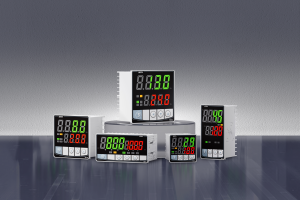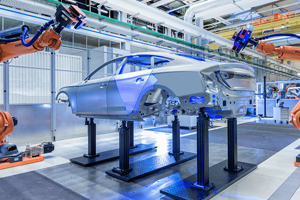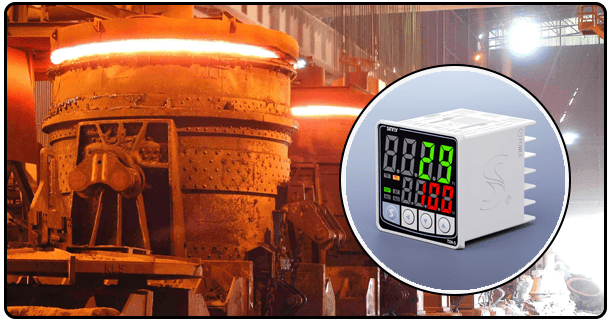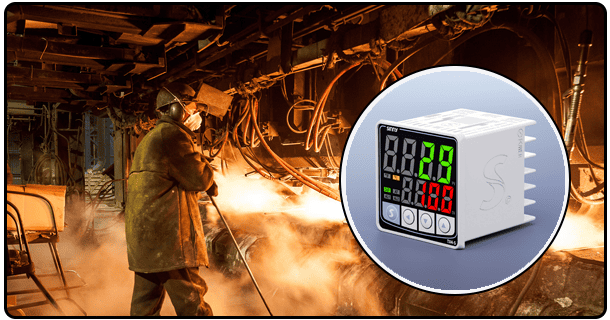How to tune a PID temperature controller: A Step-byStep guide
Our comprehensive guide will show you how to set up a PID controller. Understanding PID parameters and initial setup is key to ensuring precise temperature control.
1. Introduction
A Proportional-Integral-Derivative (PID) controller is a fundamental component in the realm of industrial control systems. This controller is used widely to control temperature, pressure and other variables in the process. It is important to maintain optimal performance by tuning a PID controller precisely. This guide walks you through how to effectively tune a temperature controller.
2. Understanding PID Parameters
In order to master PID tuning one first needs to understand the PID parameters. The parameters are Proportional(P), Integral(I) and Derivative(D).
Proportional (P): This parameter controls the response to an error. Higher proportional gains result in more aggressive responses to errors, but too high can cause system instability.
Integer (I) : This parameter adds up past errors in order to remove steady-state error. Increased integral gain can help correct persistent discrepancies, but it may cause oscillations and overshoot if tuned too much.
Derivative (D): This parameter forecasts future errors by analyzing the rate of changes. The system's stability can be improved by incorporating derivative actions.
3. Initial Configuration
It is important to check the mechanical integrity of the system before beginning the tuning process. Verify sensor accuracy and check for leaks.
4. Initializing PID values
Start by setting initial values of the PID parameter. It is recommended to begin with the gain proportional (P), while leaving the gains integral (I) or derivative (D) at zero. The system response can be observed clearly.
5. Proportional tuning
To tune a PID, the first thing to do is adjust the proportional gain.
P Increase Until Oscillation : Gradually raise the proportional gain up until the oscillation of the system begins. The critical gain is what we call it. If you notice oscillations, this is an indication that your proportional gain has reached its maximum value.
Stability Reduce the P after oscillation Once the oscillation has been observed, the proportional gain should be reduced to about half the oscillation. The system will be stable and respond quickly.
6. Integral tuning
The next step after setting the proportional gain is to set the integral gain.
Gradually increase I: Increase the integral gain slowly to eliminate steady-state errors. Integral action adds up past errors to adjust the output of control accordingly.
Maintain Stability : Maintain stability by monitoring the response of the system and adjusting the integral gain. Set the integral gain as low as possible, since it may cause oscillations and overshoot.
7. Derivative Tuning
Der Derivative Gain (D) is the final parameter that needs to be tuned.
Improved response: Increase the derivative gain incrementally to improve system response. Derivatized action can be used to predict future mistakes and correct them.
Fine Tune D: Adjust the derivative gain for optimal control. It is important to reduce overshoot, improve stability and avoid excessive damping.
8. Test and Adjustments
It is important to perform a variety of tests on the controller after tuning its PID parameters to make sure it delivers dependable performance.
Test Different Scenarios : Perform tests by changing the setpoint, and then observing how the system responds. It will help identify inconsistencies and areas where further adjustment is needed.
Parameters for fine-tuning: Make any necessary adjustments based on test results to the gains of proportional, integral and derivative gain. Iterative tuning is required to reach the performance desired.
It is important to understand the PID parameter, set initial values and then adjust the gains iteratively until you achieve the best control. This guide will help you achieve precise temperature control and improve system performance. The key to a successful PID tune-up is to test thoroughly and make incremental adjustments.
Control Tuning of a Three Mode PID Controller
- How to wire a PID temperature controller: A Step-byStep guide
- A PID Controller: Comprehensive Guide to Proportional-Integral-Derivative Control























